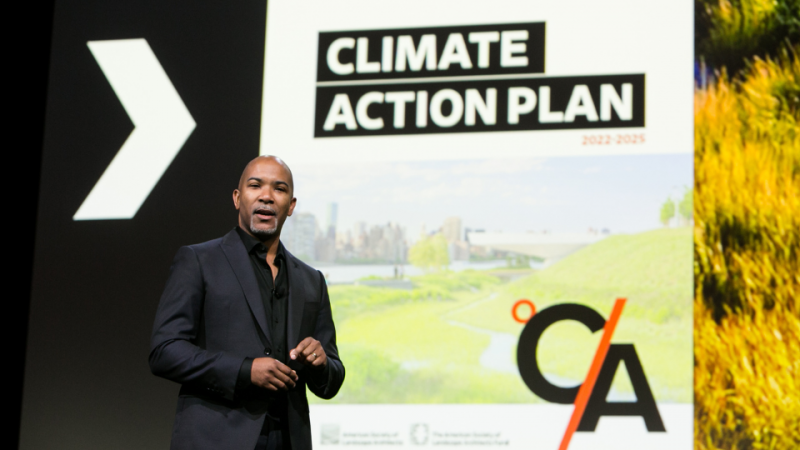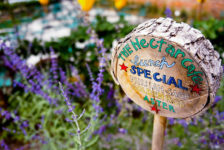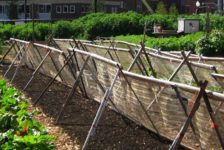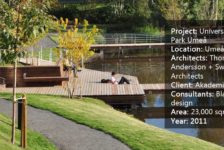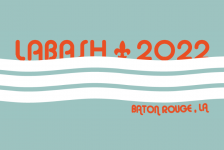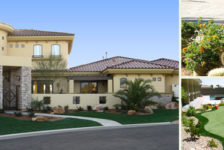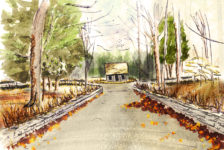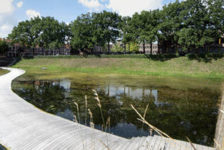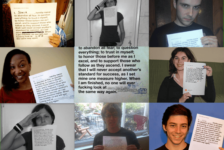In the same week that the Nature-Based Solutions Roadmap was announced by the U.S. Federal Government, the American Society of Landscape Architects (ASLA) released its official Climate Action Plan. This document provides a roadmap for how the organization can achieve zero emissions by 2040, partnered with a companion field guide, listing tools for landscape architecture firms, organizations, and designers to follow suit. Seeds of hope, sown long ago, are sprouting.
Landscape architects are systems designers who plan and design with living soils, water, plants, trees, and people – with life. Landscape Architects acknowledge that the climate and biodiversity crises are interconnected challenges of our time. Acting with the tools we know how, landscape architects are uniquely positioned to sequester carbon on projects, lowering emissions, in a way that provides the greatest benefit to the diverse communities we serve.
Upon opening the Climate Action Plan, the first quote highlights the words of Deb Haaland, member of the Pueblo of Laguna Native American tribe and U.S. Secretary for the Department of the Interior:
“We must shift our thinking away from short-term gain toward long-term investment and sustainability, and always have the next generations in mind with every decision we make.”
This document represents the shift back to indigenous perspectives and knowledge regarding the land. Moving past land acknowledgments, we dually acknowledge the harm done to indigenous communities and commit to protecting the most vulnerable populations, who are often at the front of climate disasters around the world, in the future. This plan stands on three pillars surrounding (1) Equity (2) Practice and (3) Advocacy. As we look at the work left to do, we can learn from our indigenous ancestors who have already crafted innovative technologies that help us move towards a more equitable future, for all.
Secondly, this action plan represents a shift towards genuine care for the quality world that we pass down to future generations. Three years prior to the release of this plan, a group of students and emerging professionals recognized as ASLA ADAPT wrote a letter to ASLA, concerned about the profession’s lack of advocacy and support for political and protest movements surrounding the climate disaster. Younger generations were key in this plan’s development and should be key in its implementation, as well.
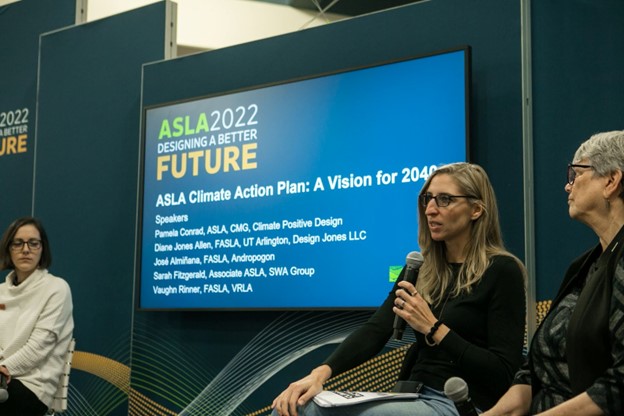
Sarah Fitzgerald, Pamela Conrad, and Vaughn Rinner | Image: ASLA
Unpacking the document, the plan is broken into two parts: (1) the Climate Action Plan and (2) the Climate Action Field Guide. The Field Guide is an important component of the set because, there, you can sink your teeth into 94 pages of tangible action steps, toolkits, and resources that landscape architects (and allied designers) can use to advocate at the various levels of power: within your institutions, organizations, firms, and communities. No one is expected to complete every task. Instead, the guide becomes an opportunity to highlight the range of innate talents that span our profession and welcome more diverse, future practitioners.
The average person may not understand what a 2-3 degree temperature rise means for the planet, nonetheless, the difference between words like “net zero” or “zero emissions”. The answer to impactful climate solutions does not depend merely on innovation, but rather on our ability to communicate the value of our economic, environmental, and social solutions to the public and elected officials. Landscape architects can design and build projects that are not only meant to be carbon neutral but go further and become “climate positive”, meaning that over their lifespan, they sequester more greenhouse gas emissions than they embody or produce.
While the plan was launched during the 2022 ASLA Conference, it is exciting to see the work already being done by members of the ASLA community. New tools, workflows, and advocacy methods are being harnessed and were spoken to throughout the conference.
Integrating climate best practices into their daily workflow, team members from Seattle-based firm GGLO, spoke about how they incorporate tools like the Pathfinder Carbon Calculator and other Revit plugins into the various phases of the design, making calculated decisions related to their project’s materiality and carbon footprint throughout the design process. We look towards firms like these as precedents for future practice and hope to see their presence on a larger scale at the conference.
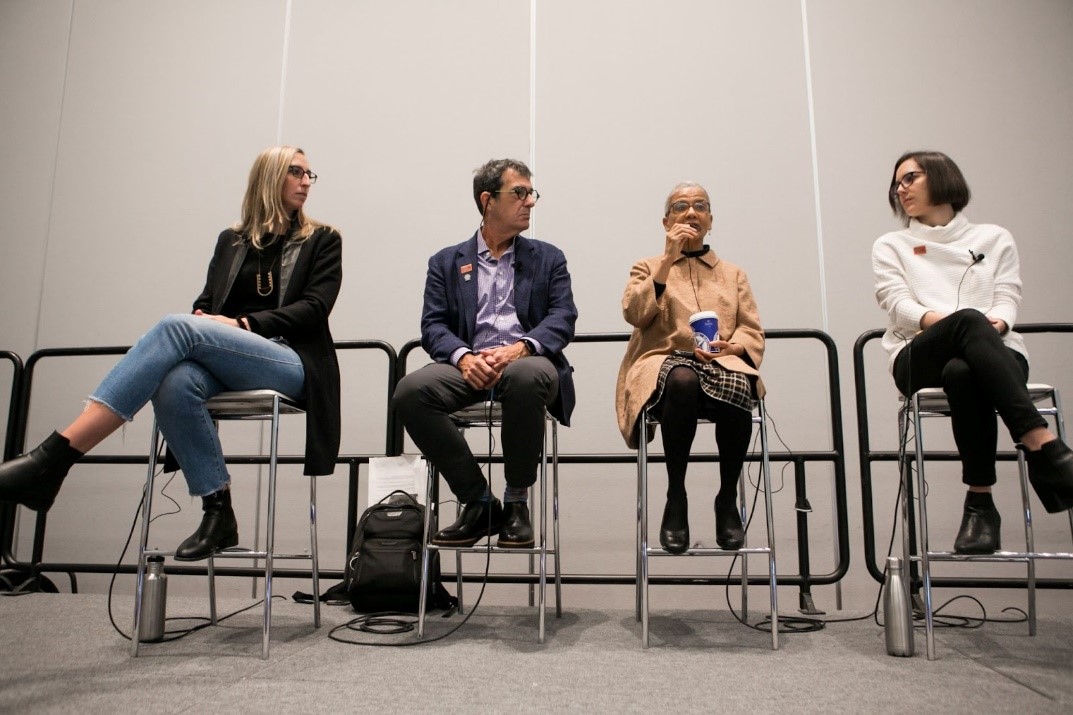
Pamela Conrad, José M. Almiñana, Diane Allen Jones, Sarah Fitzgerald | Image: ASLA
Thanks are in order to the volunteers of the Climate Action Plan Task Force who brought this plan to life. Led by Pamela Conrad, designer of the Pathfinder Carbon Calculator, the task force members included: Diane Allen Jones, Sarah Fitzgerald, Vaughn Rinner, and José Almiñana. It is important to them that this document does not become another plan on the shelf, but a living, breathing document that adapts as ASLA and its Climate Action Committee receive feedback regarding the implementation of these large goals.
This work was not done alone; your work should not be alone; and lastly, this work will need to be done for a long time. We have heard of resiliency, right? I invite you to read the Guide alone, but I also encourage you to find a community to delve into these weighty issues. As Kate Orff and Dr. Ayana Elizabeth Johnson closed out the general session, they encouraged us to start the work by answering these three questions for ourselves and work: 1) What work needs to be done? 2) What are you good at? 3) What brings you joy?
Sarah Fitzgerald, of the task force and SWA, also reminds me, “A burnt-out employee is not a good climate advocate.” Neither is someone paralyzed by the future. While reading this plan, please take time to dream as we have been taught. Question. Sketch. Celebrate. The Climate Action Plan marks the unified running, sprinting, wheeling towards a common goal. Read the plan, find your lane, and dig in.
—
Lead Image: Torey Carter-Conneen, ASLA



